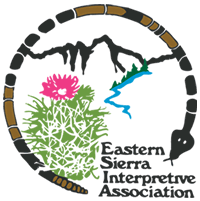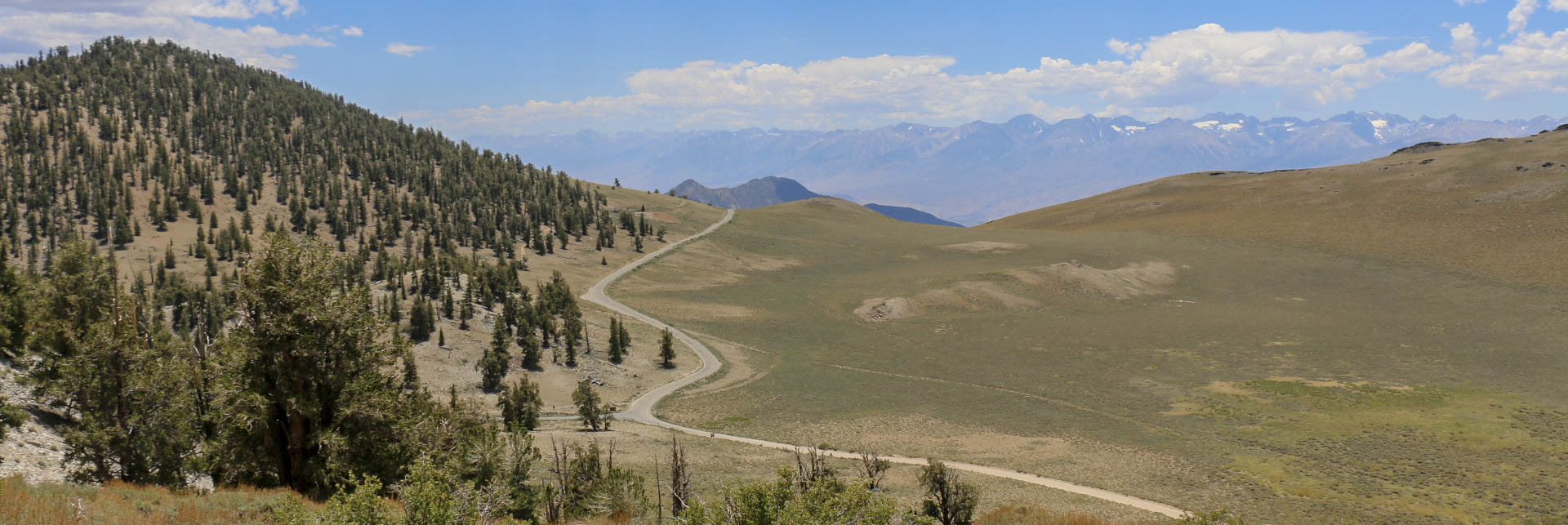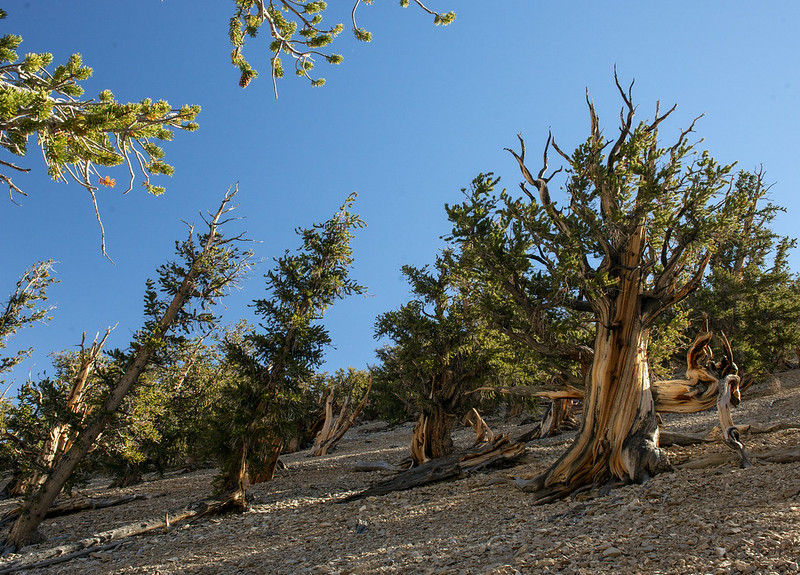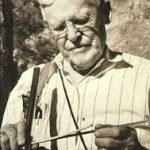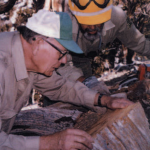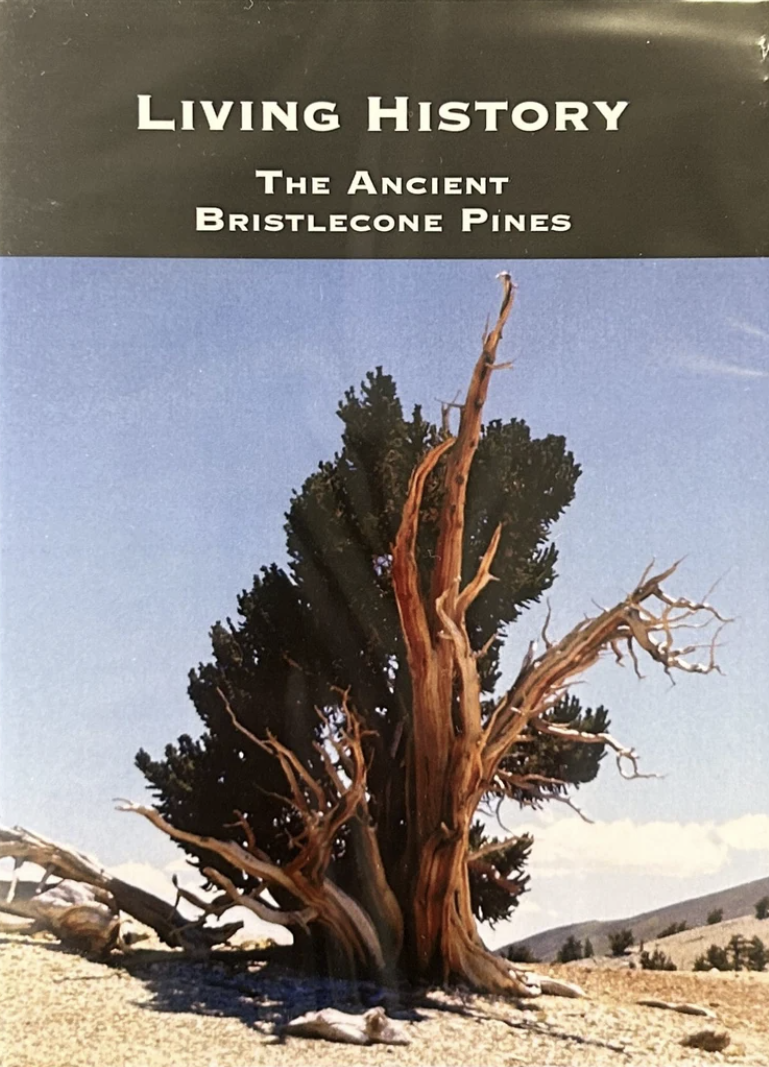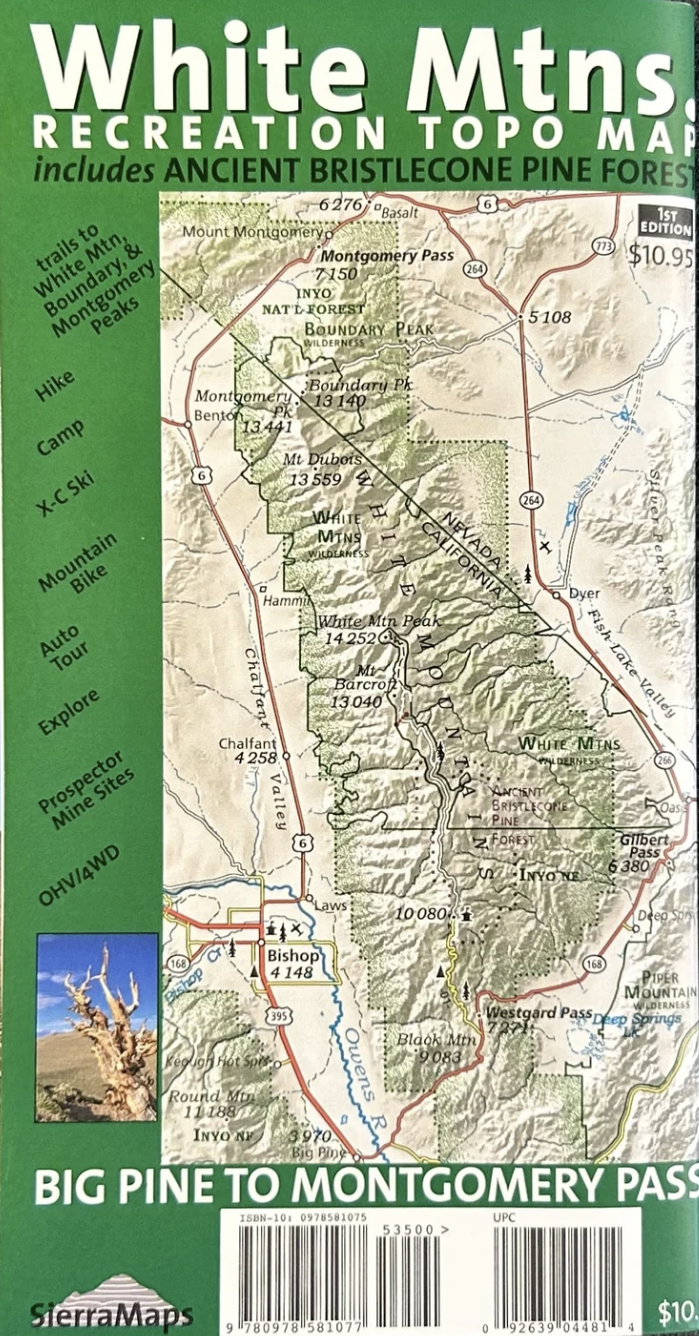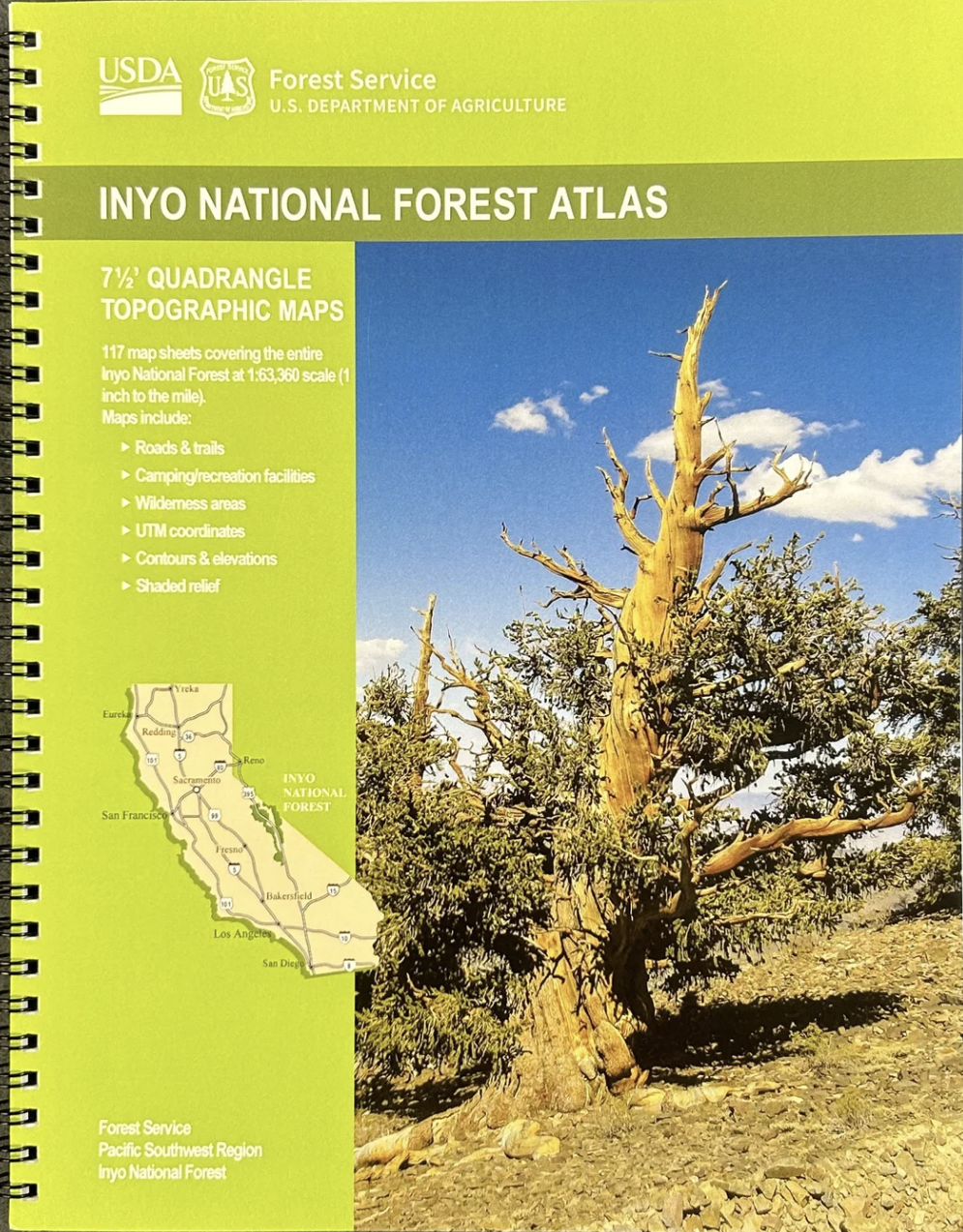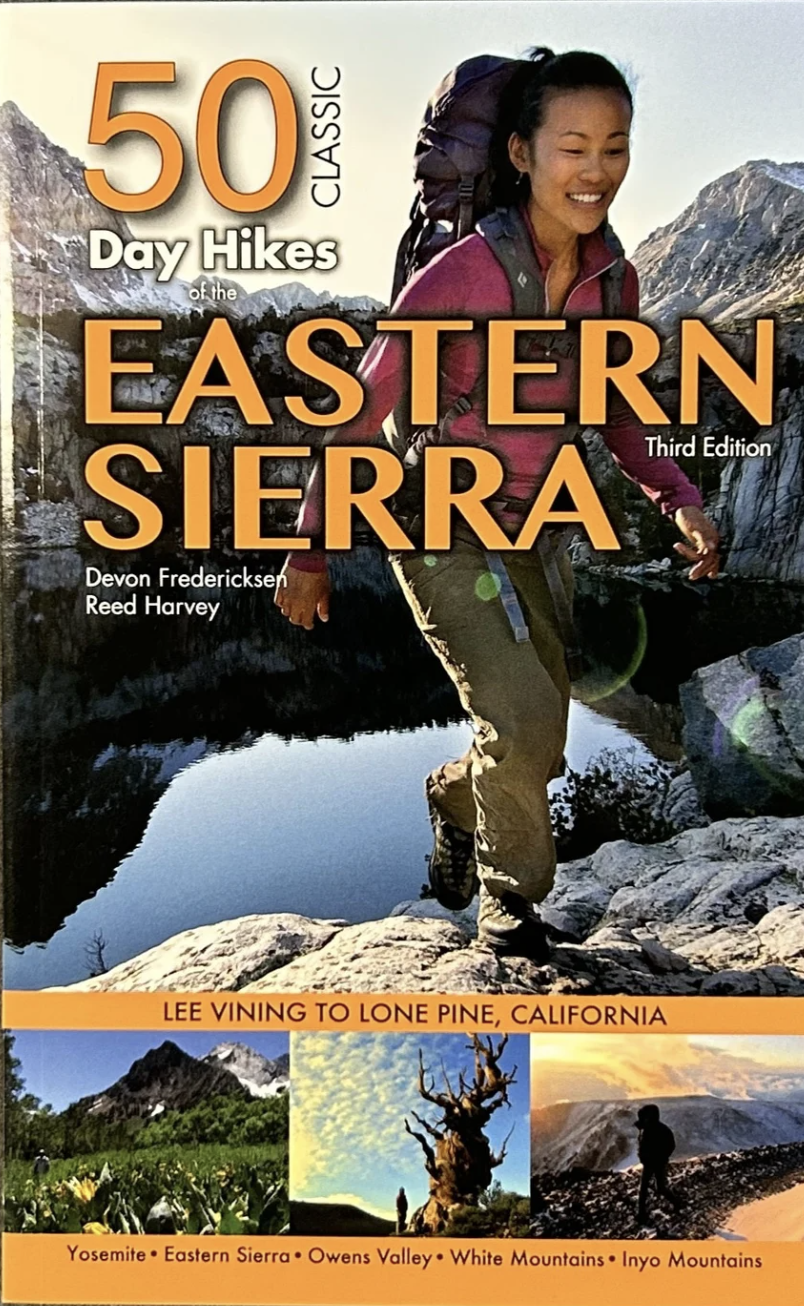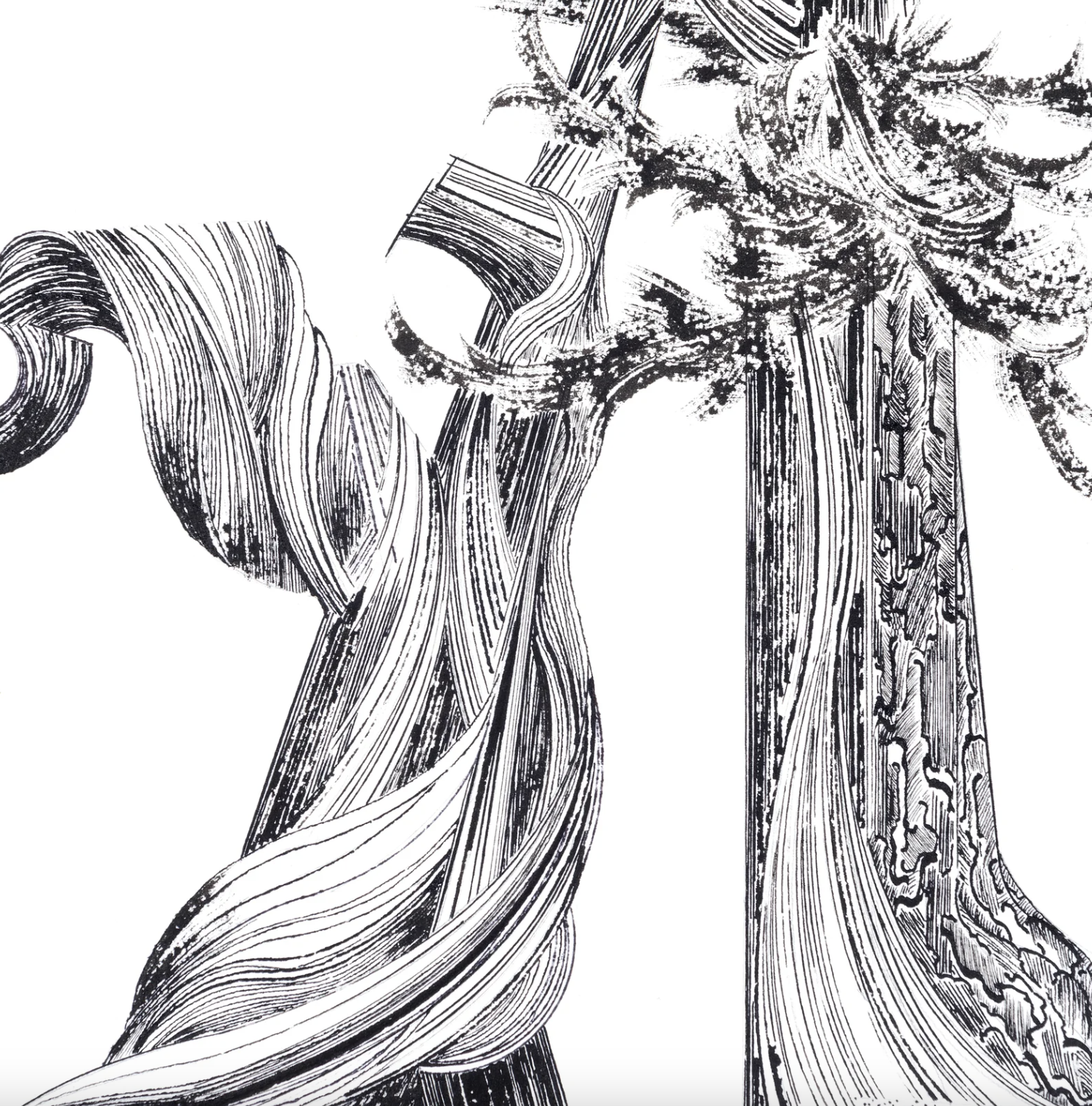Ancient Wonders in the White Mountains
The Ancient Bristlecone Pine Forest is in the White Mountains, a high desert landscape starkly contrasting its more-known neighboring range, the Sierra Nevada. The mountain ranges are alike in height and steepness; however, the White Mountains lie in the rain shadow of the Sierra, making them one of the driest places in the U.S. They overlook the Owens Valley to the west and the Great Basin of Nevada to the east. The rugged, wind-ravaged White Mountains are home to the oldest living non-clonal organisms on this planet: the great basin bristlecone pines (pinus longaeva).
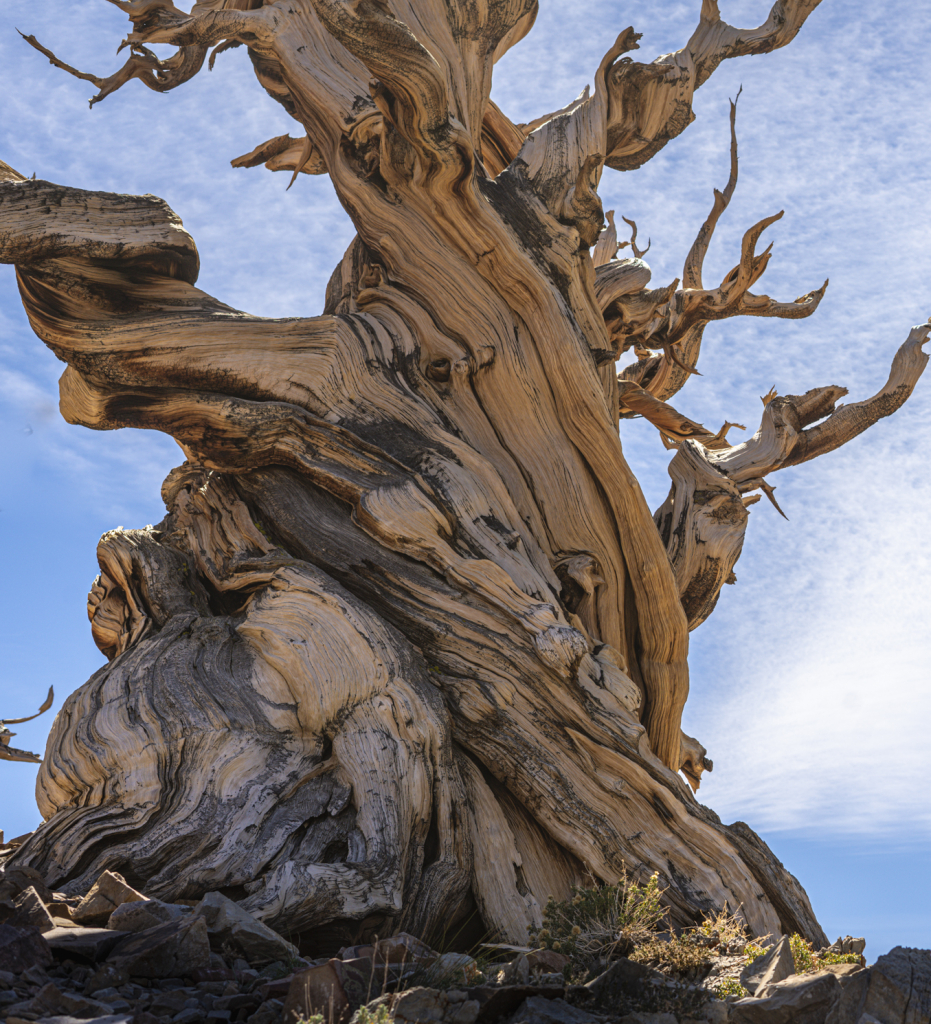
Bristlecone pines are remarkable trees that live more than 4,500 years of age! They were young seedlings when the Egyptian pyramids were being built and have endured many challenges throughout their long lives, including ice ages, volcanic eruptions, and climate change. These trees have an uncanny ability to endure harsh environments and can thrive in places where few other species can survive.
Bristlecone pines grow in white rocky soil called dolomite, which is alkaline (having a pH greater than 7) and deficient in the mineral nutrients that many other plants need for survival. These ancient trees require little in the way of soil nutrients and rely heavily on sunlight to grow. They have a distinctive appearance, with spiky bare tops and gnarled branches that spiral outward and upward. Bristlecone pines can withstand extreme weather conditions, including gale-force winds, freezing temperatures, and very little moisture. These extremely rare trees can be found in a few other areas, such as Great Basin National Park and Utah.
What are non-clonal organisms?
Non-clonal organisms are unique individuals and not genetic copies of their parent organisms. An example of a clonal organism is an aspen tree. While individual aspen trees may live up to 130 years, they are a group of genetically identical trees connected to each other through a root system that is far older. There is an aspen grove in the Wasatch Mountains of Utah that is estimated to be up to 80,000 years old.
How to Identify a Bristlecone Pine
Bristlecone pines and limber pines live in similar areas (often sharing the same grove) and can be confused with one another. They share a resemblance, shaped by their harsh living conditions. You can tell the difference when you look at the pine needles in each tree.
Bristlecone pines have needles that are 1 inch long and grow in packets of five. The needles may extend back a foot or more along the branch, giving a bottle brush appearance. Their new pinecones are purple to absorb the sun’s heat until they mature and turn brown after two years. This is where bristlecones get their name: the cones’ scales are tipped with claw-like bristles.
Limber pines also have needles that grow in packets of five, however, they are 1.5-3 inches long and grow towards the end of the branches. The cones do not share the same claw-like bristles. They are no spring chickens either and can live up to 2,000 years old.
The Schulman Grove and Visitor Center
The Visitor Center is located at Schulman Grove and is open seasonally, 6 am to 10 pm. Bathrooms, picnic tables, and trash cans are provided. There is no water available, please bring your own. The visitor center is only open in the summer months, offering information and exhibits, interpretive programs, a bookstore, and a gift shop. ESIA operates the visitor center bookstore.
Schulman Grove is named after Edmund Schulman, who uncovered the confounding ages of these gnarled trees. The Ancient Bristlecone Pine Forest was designated in 1958 to honor Schulman’s scientific contributions. Self-guided tours allow visitors to explore the forest at their own pace. The trails are easy to moderate hiking. The visitor center is wheelchair accessible, with views of the trees from the boardwalk.
Three hiking trails leave the visitor center: the Discovery Trail, the Methuselah Trail, and the Bristlecone Cabin Trail.
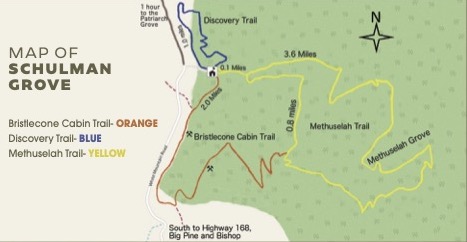
The Methuselah Trail – a 4.5-mile trail that loops through the Methuselah Grove. The Methuselah tree, unmarked to protect its identity, is over 4,850 years old and is the oldest known bristlecone.
The Bristlecone Cabin Trail – a 3.5-mile loop that offers views of old mines and cabins. It links into the Methuselah Trail.
The Patriarch Grove
Twelve miles north of the visitor center (on a well-maintained dirt road) lies the Patriarch Grove, which is home to the largest bristlecone pine: the Patriarch Tree. “Its splendid remoteness and moonscape appearance gives the Patriarch Grove a surreal atmosphere. Bristlecone pines and limber pines dot the landscape with a background view of the Great Basin in Nevada.” – Inyo National Forest. The area has two loops that are each less than a mile and offer interpretive signs.
You can visit both groves in one day with an early start. Both groves have picnic tables and restrooms. They are open from 6 am to 10 pm.
Camping
Grandview Campground (8,600 feet) is located only 5 miles from Schulman Grove. There are 23 campsites provided on a first-come, first-served basis with plenty of shade. Three vault toilets are provided in the campground, and each campsite has a table, a fire ring, and space for two cars. There will be interpretive programs at the Campground this summer provided by ESIA.
How to Get There
The Schulman Grove is 45 minutes from the nearest town, Big Pine, along a steep and winding paved road with 6,000 feet of elevation gain. From Highway 395 just north of Big Pine, go east on CA 168 for 13 miles. Turn left (north) on White Mountain Road to the Bristlecone Pine Forest. In 10 miles, turn right to arrive at the Schulman Grove parking lot.
Continue the dirt road for 13 miles and you will come to Patriarch Grove. The road is maintained, however, we suggest having a spare tire (and knowing how to change one!). PLEASE NOTE AAA will not tow your vehicle off of a paved road. Cell phone service is intermittent and not reliable. Fill up your gas tank before leaving Big Pine. We are not trying to scare you but please be prepared.
White Mountain Road closes with snow and is unmaintained in winter.
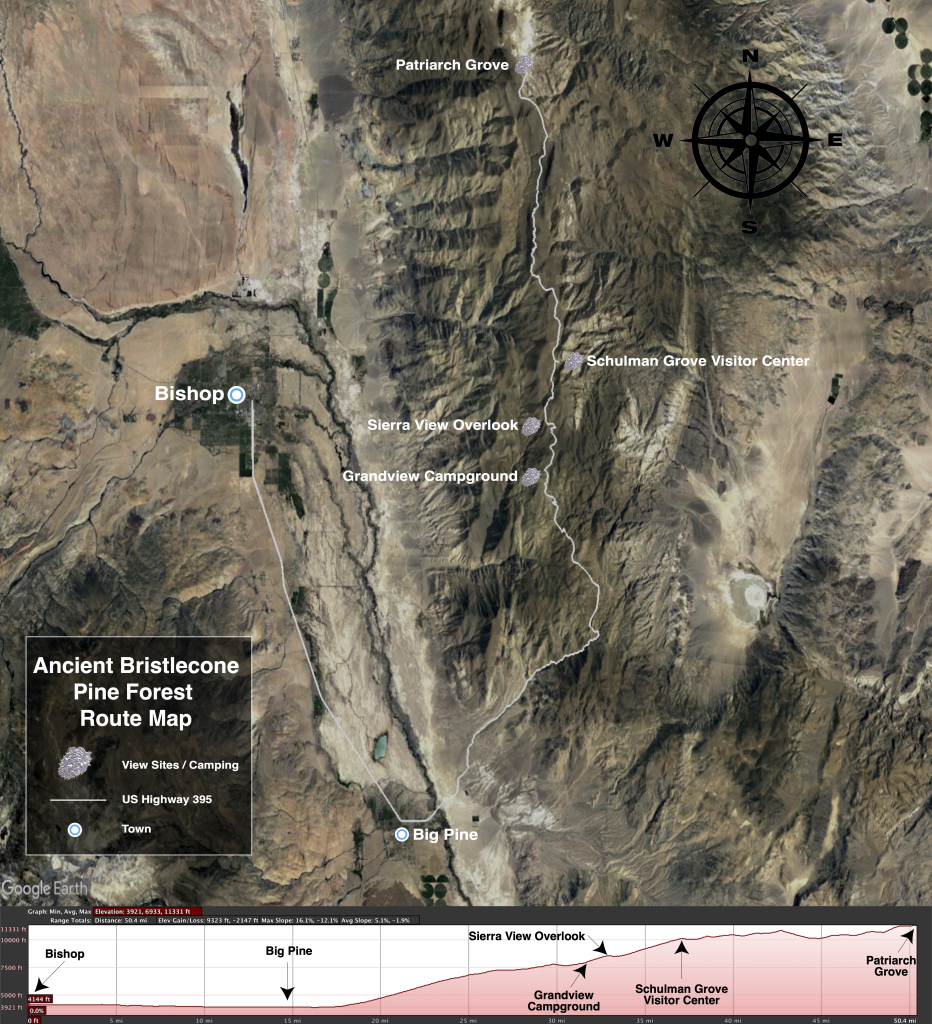
Recreate Responsibly and Plan Ahead!
- Bristlecone Pine and Limber Pine are protected, NO collecting of downed wood
- No water is available
- No gas stations or amenities
- No camping or campfires
- Hikers must stay on trails
- No bicycles on trails
- Dogs are allowed on a leash
- Groves are day use only, open from 6 am to 10 pm
Activities
- Hiking – you can hike loops from either grove.
- Nature Viewing- take in the ancient landscape and experience a unique mountainous setting.
- Picnicking – bring the family out for a picnic on one of the tables.
- Outdoor Learning – each hiking trail is equipped with interpretive signage.
- Creating art – from photography to drawing to painting, the Bristol Cones have been a muse for aspiring and professional artists.
- Road cycling – Cycling up to the visitor center is popular for experienced cyclists. It is regarded as a safe, quiet road with light traffic.
- Winter sports: XC Skiing/Snowshoeing – White Mountain Road is closed at the Sierra View Gates in winter. Visitors can hike, snowshoe, or ski the remaining distance to the groves.
- For a list of birds in the White Mountains, click HERE
Wildlife
“The twisted branches of these dramatic, wind-polished trees become temporary perches for songbirds such as mountain chickadees, hermit thrushes, mountain bluebirds, and violet-green swallows. Clark’s nutcrackers, pinyon jay, and common ravens are abundant. Watch for golden eagles and American kestrels scanning the slopes for white-tail jack rabbits, chipmunks, golden-mantled ground squirrels, western fence lizards, and grasshoppers.” – California Watchable Wildlife
Other trees in the area: Single-leaf Pinyon Pine, Utah Juniper, Limber Pine
Flowers in the area: Apricot mallow, brittlebush, prickly poppy, rabbitbrush,
Other Wildlife in the area: desert bighorn sheep, mule deer, bi-state sage grouse, horned lark, rosy crowned finches, mountain bluebirds, black-tailed jackrabbit, golden-mantled ground squirrel
Pioneers of Dendrochronology
Dendrochronology is defined as the science of observing tree-ring patterns and using the patterns to study climate, archeology, and geology. The scientists shown here have been instrumental in the advancement of the science of dendrochronology and have contributed immensely to our understanding of the natural history of the ancient bristlecone pine.
Andrew Ellicott Douglass (1867-1962) has been referred to as the founder of modern dendrochronology. He began theorizing that the increased solar radiation from periodic sunspots might be recorded in tree ring size variations as weather changes would change precipitation amount and precipitation change would then show up as wider or narrower tree rings.
Dr. Edmund Schulman (1908-1958) was a student and eventually a colleague of Douglas. One of the first to study Great Basin bristlecone pines for their longevity, he was the first dendrochronologist to core a 4,000-year-old tree, one that is located in Schulman Grove today. The area has been named in his honor.
Dr. Wesley Ferguson (1922-1986) worked under Dr. Schulman and spent most of his time extending the continuous chronology of bristlecone wood back to 8,000 years. He provided further research on the precipitation records using the wood he cored.
Dr. Henry Michael was a world-renowned scientist best known for his work in dendrochronology and anthropology. He spent endless days in the White Mountains searching for the oldest pieces of wood. Like Dr. Schulman and Dr. Ferguson, Dr. Michael was piecing together overlapping tree rings in an attempt to extend back as far as possible the continuous tree-ring chronology. Dr. Michael was a distinguished professor and his work in the Bristlecone Pine Forest contributed immensely to our understanding and appreciation of these ancient wonders.
For more information on these and other dendrochronologists who worked with bristlecones, inquire at the Visitor Center.

